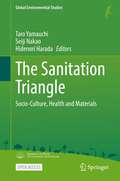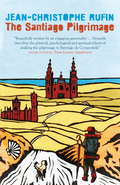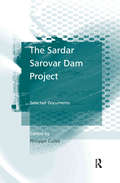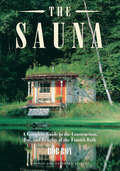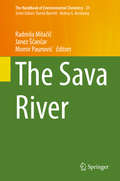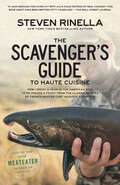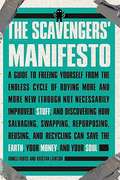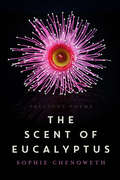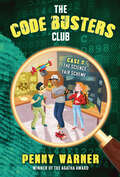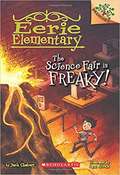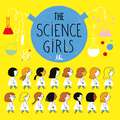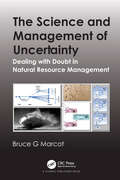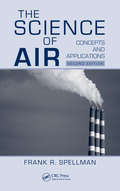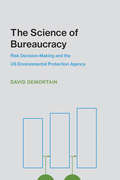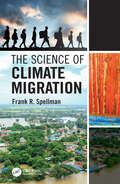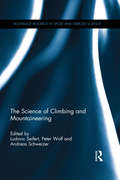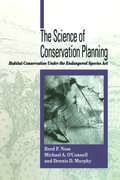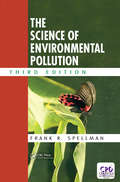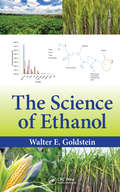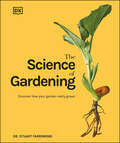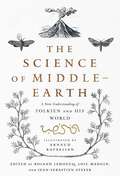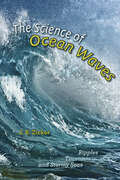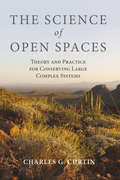- Table View
- List View
The Sanitation Triangle: Socio-Culture, Health and Materials (Global Environmental Studies)
by Taro Yamauchi Seiji Nakao Hidenori HaradaThis open access book deals with global sanitation, where SDG 6.2 sets a target of enabling access to sanitation services for all, but has not yet been achieved in low- and middle-income countries. The transition from the United Nations MDGs to the SDGs requires more consideration based on the socio-cultural aspects of global sanitation. In other words, equitable sanitation for those in vulnerable situations could be based on socio-cultural contexts. Sanitation is a system that comprises not only a latrine but also the works for the treatment and disposal of human waste. Sanitation systems do not function by themselves but have significance only through social management. The process of decision-making also largely depends on socio-cultural conditions, and the importance of sanitation needs to be socially acknowledged. The health benefits of sanitation improvement—among the significant contributions of sanitation—also need to be considered in the socio-cultural milieu. Further, the social-culture itself is affected, and potentially even created, by sanitation. In this context, more progress on the improvement of sanitation requires a more holistic approach across disciplines.In this book, we present the concept of the Sanitation Triangle, which considers the interconnections of health, materials, and socio-culture in sanitation, as a holistic approach, and the case studies based on the Sanitation Triangle by diverse disciplines such as Cultural Anthropology, Development Studies, Health Sciences, Engineering, and Science Communication. By the deep theoretical examinations and inter-dialogues between the different disciplines, this book explores the potentialities of inter-disciplinary studies on global sanitation.
The Santiago Pilgrimage: Walking the Immortal Way
by Jean-Christophe Rufin"Whenever I was asked: 'Why did you go to Santiago?', I had a hard time answering. How could I explain to those who had not done it that the way has the effect - if not the virtue - to make you forget all reasons that led you to become involved in it in the first place."Each year, tens of thousands of backpackers (Christian pilgrims and many others) set out from either their front doorstep or from popular starting points across Europe, to Santiago de Compostela. Most travel by foot, others ride a bicycle, and a few of them travel as did some of their medieval counterparts, on horseback or with a donkey. In addition to those who undertake a religious pilgrimage, the majority are hikers who walk the way for non-religious reasons: travel, sport, or simply the challenge of spending weeks walking in a foreign land. Also, many consider the experience as a spiritual adventure, with a view to removing themselves from the bustle of modern life. Jean-Christophe Rufin followed this "Northern Way" to Santiago de Compostela by foot, on over eight hundred kilometers. Much less crowded than the usual pilgrimage route, this one runs along the Basque and Cantabrian coasts in Spain and through the wild mountains of Asturias and Galicia.Translated from the French by Malcolm Imrie and Martina Dervis
The Sardar Sarovar Dam Project: Selected Documents
by Philippe CulletThe Sardar Sarovar Project has been one of the most debated development projects of the past several decades at both an international level and within India itself. Cullet's volume brings together all the key documents relating to the project: including those pertaining to World Bank loans, the judicial pronouncements of the Supreme Court and documents relating to specific local level issues - in particular environment and rehabilitation. The work includes an introductory section focusing on the history of the project, the involvement of the different actors, the impacts on the local population, and a general analysis of the controversy surrounding it. In providing an easily accessible source for all the main documents relating to this landmark project, this compilation will be a valuable resource for researchers and policy-makers working in the areas of International Environmental Law and International Development Law.
The Sauna: A Complete Guide to the Construction, Use, and Benefits of the Finnish Bath, 2nd Edition
by Robert L. RoyReplete with history, tradition, health benefits, instructions for proper use and maintenance, this completely revised and expanded edition will inspire!With a history going back at least one thousand years, the sauna is ready for a new generation of enthusiasts seeking health, pleasure, and peace of mind, and Rob Roy is ready to recruit! &“If the sauna is just a bath, then Buckingham Palace is just a house.&” So writes sauna expert and intrepid do-it-yourselfer Roy in this new, updated version of The Sauna.This completely revised and expanded edition of The Sauna contains everything you ever wanted to know about the famous &“Finnish bath.&” In this inviting book, Roy shares his infectious enthusiasm for the sauna and provides a complete, detailed guide to sauna building, along with resources for equipment and supplies.The Sauna is replete with history, tradition, health benefits, instructions for proper use and maintenance, as well as step-by-step instructions for building a variety of cordwood masonry saunas and, new to this edition, conventionally wood-framed saunas. The beautiful color photographs, also new to this edition, will inspire you to create your own sauna haven.
The Sava River
by Radmila Milačič Janez Ščančar Momir PaunovićThis volume provides a comprehensive overview of environmental aspects of the Sava River, which is the greatest tributary to the Danube River and the major drainage river system of South Eastern Europe. Hydroelectric power plants, river traffic, intensive agricultural activities, heavy industry and floods have considerable influence on the environment and biota in the basin. Summarizing the results that were gathered in the course of EU, bilateral and national projects, the book highlights the most important stressors and helps readers to better understand the impact of anthropogenic activities on the function of river basins. Topics include: transboundary water cooperation between the riparian countries; climate change projection, including its impact on flood hazards; evaluation of anthropogenic pollution sources; pollution of sediments, metal bioavailability and ecotoxicological and microbiological characterization of the river. The biological part also addresses quality aspects related to wildlife in river aquatic ecosystems (algae, macrophytes, zooplankton, macroinvertebrates and fish) and riparian ecosystems (amphibians, reptiles, birds and mammals). The general state of biodiversity and pressures caused by invasive aquatic species are also discussed.
The Scavenger's Guide to Haute Cuisine: How I Spent a Year in the American Wild to Re-create a Feast from the Classic Recipes of French Master Chef Auguste Escoffier
by Steven RinellaWhen outdoorsman, avid hunter, and nature writer Steven Rinella stumbles upon Auguste Escoffier's 1903 milestone Le Guide Culinaire, he's inspired to assemble an unusual feast: a forty-five-course meal born entirely of Escoffier's esoteric wild game recipes. Over the course of one unforgettable year, he steadily procures his ingredients--fishing for stingrays in Florida, hunting mountain goats in Alaska, flying to Michigan to obtain a fifteen-pound snapping turtle--and encountering one colorful character after another. And as he introduces his vegetarian girlfriend to a huntsman's lifestyle, Rinella must also come to terms with the loss of his lifelong mentor--his father. An absorbing account of one man's relationship with family, friends, food, and the natural world, The Scavenger's Guide to Haute Cuisine is a rollicking tale of the American wild and its spoils. Praise for The Scavenger's Guide to Haute Cuisine "If Jack Kerouac had hung out with Julia Child instead of Neal Cassady, this book might have been written fifty years ago. . . . Steven Rinella brings bohemian flair and flashes of poetic sensibility to his picaresque tale of a man, a cookbook, and the culinary open road."--The Wall Street Journal "If you rue the 'depersonalization of food production,' or you're tired of chemical ingredients, [Rinella] will make you howl."--Los Angeles Times "A walk on the wild side of hunting and gathering, sure to repel a few professional food sissies but attract many more with its sheer in-your-face energy and fine storytelling."--Jim Harrison, author of Legends of the Fall "[A] warped, wonderful memoir of cooking and eating . . . [Rinella] recounts these madcap wilderness adventures with delicious verve and charm."--Men's JournalFrom the Trade Paperback edition.
The Scavengers' Manifesto
by Anneli Rufus Kristan LawsonDestined to become the bible for a bold new subculture of eco-minded people who are creating a lifestyle out of recycling, reusing, and repurposing rather than buying new. An exciting new movement is afoot that brings together environmentalists, anticonsumerists, do-it-yourselfers, bargain-hunters, and treasure-seekers of all stripes. You can see it in the enormous popularity of many websites: millions of Americans are breaking free from the want-get-discard cycle by which we are currently producing approximately 245 million tons of waste every day (that's 4. 5 pounds per person, per day!). In The Scavengers' Manifesto, Anneli Rufus and Kristan Lawson invite readers to discover one of the most gratifying (and inexpensive) ways there is to go green. Whether it's refurbishing a discarded wooden door into a dining-room table; finding a bicycle on freecycle. org; or giving a neighbor who just had a baby that cute never-used teddy bear your child didn't bond with, in this book Rufus and Lawson chart the history of scavenging and the world-changing environmental and spiritual implications of "Scavenomics," and offer readers a framework for adopting scavenging as a philosophy and a way of life. .
The Scent of Eucalyptus: Precious Poems
by Sophie ChenowethThis book is an ode to the fragrant, yet rough-hewn Australian bush. By delving into its pages, you will be transported to a parallel realm where flannel flowers sing, cockatoos choreograph and paperbark trees seduce. A memoir of sorts, this poignant and ethereal collection of poems celebrates the beauty, the harshness and the resilience of this ancient land and its unforgettable inhabitants. In addition, you'll be serenaded by harps and fairies, meander through time in a yellow dinghy and stand in quiet awe as a ballerina beguiles. Refreshingly honest, this waltz down memory lane is intensely emotional but has a lightness that will soothe even on the blusteriest of days. Illustrated with sensitively taken photographs, it is a keepsake you will cherish for many years to come.
The Science Fair Scheme (The Code Busters Club #8)
by Penny WarnerWill the Code Busters be able to unravel their latest case? Cody, Quinn, Luke, M.E., and Mika are the Code Busters—clever clue hunters with a passion for puzzles. They can’t wait to compete in the Science Fair. They each plan to come up with unique projects—all incorporating codes—for the chance to win first place! But when they discover someone spying on them and find pieces of their projects sabotaged, their chances of winning look slim. Will the Code Busters be able to find out who is spying on them? And can they salvage all their projects to win the prize? Can you crack the code? Test your brain with the Code Busters to see if you have the right stuff to be an ace detective. Answers are in the back, if you ever get stuck.
The Science Fair is Freaky! (Eerie Elementary #4)
by Sam Ricks Jack ChabertIn book 4 of this hit series, a giant volcano grows up out of the floor of Eerie Elementary! <p><p> This series is part of Scholastic's early chapter book line Branches, aimed at newly independent readers. With easy-to-read text, high-interest content, fast-paced plots, and illustrations on every page, these books will boost reading confidence and stamina. Branches books help readers grow! <p><p> Eerie Elementary is having a science fair. Sam, Antonio, and Lucy are hard at work on their projects when they find a strange, old book. Suddenly, the school comes alive! The ground shakes, science projects explode, and the school gym turns into a giant volcano! How will Sam and his friends fight hot lava? And what is hidden in that strange, old book?
The Science Girls
by AkiGrab your goggles and join the Science Girls! We’re science girls! We love to learn.We gather, test, assess, discern!From the lab to the meadow to the greenhouse—the science girls have lots to see, lots to do, and lots to explore. Follow this troupe of busy girls as they have fun hypothesizing and analyzing in a day full of curiosity and excitement.
The Science and Management of Uncertainty: Dealing with Doubt in Natural Resource Management
by Bruce G. MarcotUncertainty can take many forms, can be represented in many ways, and can have important implications in decision-making and policy development. This book provides a rigorous scientific framework for dealing with uncertainty in real-world situations, and provides a comprehensive study of concepts, measurements, and applications of uncertainty in ecological modeling and natural resource management. The focus of this book is on the kinds and implications of uncertainty in environmental modeling and management, with practical guidelines and examples for successful modeling and risk analysis in the face of uncertain conditions and incomplete information. Provided is a clear classification of uncertainty; methods for measuring, modeling, and communicating uncertainty; practical guidelines for capturing and representing expert knowledge and judgment; explanations of the role of uncertainty in decision-making; a guideline to avoiding logical fallacies when dealing with uncertainty; and several example cases of real-world ecological modeling and risk analysis to illustrate the concepts and approaches. Case topics provide examples of structured decision-making, statistical modeling, and related topics. A summary provides practical next steps that the reader can take in analyzing and interpreting uncertainty in real-world situations. Also provided is a glossary and a suite of references.
The Science and Politics of Global Climate Change
by Andrew E. Dessler Edward A. ParsonThe second edition of Dessler and Parson's acclaimed book provides an integrated treatment of the science, technology, economics, policy, and politics of climate change. Aimed at the educated non-specialist, and at courses in environmental policy or climate change, the book clearly lays out the scientific foundations of climate change, the issues in current policy debates, and the interactions between science and politics that make the climate change debate so contentious and confusing. This new edition is brought completely up to date to reflect the rapid movement of events related to climate change. In addition, all sections have been improved, in particular a more thorough primer on the basic science of climate change is included. The book also now integrates the discussion of contrarian claims with the discussion of current scientific knowledge; extends the discussion of cost and benefit estimates; and provides an improved glossary.
The Science of Air: Concepts and Applications, Second Edition
by Frank R. SpellmanHailed on first publication as a masterful review of the topic, The Science of Air: Concepts and Applications quickly became a standard resource in the field. Clearly written and user-friendly, the second edition continues to provide the scientific underpinnings of the essence of air. Major expansions include:Air math and physicsAir flow parameters
The Science of Bureaucracy: Risk Decision-Making and the US Environmental Protection Agency (Inside Technology)
by David DemortainHow the US Environmental Protection Agency designed the governance of risk and forged its legitimacy over the course of four decades.The US Environmental Protection Agency was established in 1970 to protect the public health and environment, administering and enforcing a range of statutes and programs. Over four decades, the EPA has been a risk bureaucracy, formalizing many of the methods of the scientific governance of risk, from quantitative risk assessment to risk ranking. Demortain traces the creation of these methods for the governance of risk, the controversies to which they responded, and the controversies that they aroused in turn. He discusses the professional networks in which they were conceived; how they were used; and how they served to legitimize the EPA. Demortain argues that the EPA is structurally embedded in controversy, resulting in constant reevaluation of its credibility and fueling the evolution of the knowledge and technologies it uses to produce decisions and to create a legitimate image of how and why it acts on the environment. He describes the emergence and institutionalization of the risk assessment–risk management framework codified in the National Research Council's Red Book, and its subsequent unraveling as the agency's mission evolved toward environmental justice, ecological restoration, and sustainability, and as controversies over determining risk gained vigor in the 1990s. Through its rise and fall at the EPA, risk decision-making enshrines the science of a bureaucracy that learns how to make credible decisions and to reform itself, amid constant conflicts about the environment, risk, and its own legitimacy.
The Science of Climate Migration
by Frank R. SpellmanThis book addresses the nexus between science and migration and examines how the two are inextricably intertwined. The Science of Climate Migration primarily addresses the science of global climate change and additionally examines how this change is more than a region being too hot, too cold, too dry, too wet, or too windy; rather it is also about heightened military tensions, political instability, and myriad other factors. History has shown that this change is felt most acutely in developing countries that are least equipped to adapt. This inability to adapt is considered to be a driver that motivates local residents to find “greener pastures” through migration. Further, the book discusses the increasing need for the implementation and utilization of non-polluting renewables for use in energy production as a means to stave off environmental crises. Features Examines how and why climate change effects and human migration are inextricably intertwined. Discusses the increasing need for the implementation of non-polluting renewables for use in energy production as a means to stave off environmental crises. Explains how wildlife is also sensitive to shifts in climate and how this in turn affects their migration as well.
The Science of Climbing and Mountaineering (Routledge Research in Sport and Exercise Science)
by Ludovic Seifert Peter Wolf Andreas SchweizerThis is the first book to explore in depth the science of climbing and mountaineering. Written by a team of leading international sport scientists, clinicians and climbing practitioners, it covers the full span of technical disciplines, including rock climbing, ice climbing, indoor climbing and mountaineering, across all scientific fields from physiology and biomechanics to history, psychology, medicine, motor control, skill acquisition, and engineering. Striking a balance between theory and practice, this uniquely interdisciplinary study provides practical examples and illustrative data to demonstrate the strategies that can be adopted to promote safety, best practice, injury prevention, recovery and mental preparation. Divided into six parts, the book covers all essential aspects of the culture and science of climbing and mountaineering, including: physiology and medicine biomechanics motor control and learning psychology equipment and technology. Showcasing the latest cutting-edge research and demonstrating how science translates into practice, The Science of Climbing and Mountaineering is essential reading for all advanced students and researchers of sport science, biomechanics and skill acquisition, as well as all active climbers and adventure sport coaches.
The Science of Conservation Planning: Habitat Conservation Under The Endangered Species Act
by Michael O'Connell Reed F. Noss Dennis D. MurphyBroad-scale conservation of habitats is increasingly being recognized as a more effective means of protecting species and landscapes than single-species preservation efforts. While interest in the approach has grown tremendously in recent years, it remains controversial and the science behind it has yet to be fully developed.In The Science of Conservation Planning, three of the nation's leading conservation biologists explore the role of the scientist in the planning process and present a framework and guidelines for applying science to regional habitat-based conservation planning. Chapters consider: history and background of conservation planning efforts criticisms of science in conservation planning principles of conservation biology that apply to conservation planning detailed examination of conservation plans specific recommendations for all parties involved.The recommendations, interpretations, and questions provided are thoroughly based in the science of conservation biology, and the framework presented is adaptable to allow for revision and improvement as knowledge is gained and theories refined. The Science of Conservation Planning will serve as a model for the application of conservation biology to real-life problems, and can lead to the development of scientifically and politically sound plans that are likely to achieve their conservation goals, even in cases where biological and ecological information is limited.The book is essential for scientists at all levels, including agency biologists, academic scientists, environmental consultants, and scientists employed by industry and conservation groups. It is also a valuable resource for elected officials and their staffs, environmentalists, developers, students, and citizen activists involved with the complex and contentious arena of conservation planning.
The Science of Environmental Pollution
by Frank R. SpellmanThis new edition of The Science of Environmental Pollution presents common-sense approaches and practical examples based on scientific principles, models, and observations, but keeps the text lively and understandable for scientists and non-scientists alike. It addresses the important questions regarding environmental pollution: What is it? What is its impact? What are the causes and how can we mitigate them? But more than this, it stimulates new ways to think about the issues and their possible solutions. This third edition has been updated throughout, and contains new information on endocrine disruptors in drinking water, contaminated sediments in surface waters, hydraulic fracturing wastewater, and more. Also, it will include new case studies, examples, and study questions. Environmental issues continue to attract attention at all levels. Some sources say that pollution is the direct cause of climate change; others deny that the possibility even exists. This text sorts through the hyperbole, providing concepts and guidelines that not only aid in understanding the issues, but equip readers with the scientific rationale required to make informed decisions.
The Science of Ethanol
by Walter E. GoldsteinThis book covers all facets involving the production and use of ethanol. Topics include the optimization of raw materials, energy, capital, process model-based computer control, and human resources to produce ethanol. It compares and contrasts processes to prepare ethanol using biotechnology processes to prepare ethanol from chemical synthesis. Matters of optimization of ethanol use as fuel/fuel components are addressed based on thermodynamics, kinetics, and usage. It also discusses pollutants produced from ethanol and mixtures containing ethanol, the status of ways to control these pollutants, and what can be done to minimize the harm to the earth’s ecosystems due to ethanol and gasoline reactions.
The Science of Friendship
by Tanita S. DavisA friendship hypothesis—and one failed experiment—leads one girl to investigate the science of middle school friendship makeups and breakups in this hopeful and heartwarming story from Tanita S. Davis, author of Partly Cloudy and Serena Says.Rylee Swanson is beginning eighth grade with zero friends.A humiliating moment at the end-of-seventh-grade pool party involving a cannonball, a waterlogged updo, and some disappearing clothes has Rylee halfway convinced she’s better off without any friends—at least friends like those.The one question Rylee can’t shake is . . . why? When a group assignment in journalism pairs Rylee with science geek DeNia Alonso, DeNia’s annoyingly know-it-all, nerdy personality is both frustration and fuel to Rylee’s search for answers. Together they conduct research, run surveys, and write their way toward even more questions about what makes friendships—and breaks them. Between her shaky new partnership with DeNia, an annoying brother, and a friend from the past, Rylee’s got a lot to think about. But the more she learns, the more Rylee wonders: Could there be a science to friendship? And can it keep her from losing friends ever again?With warmth, heart, and resonance, Tanita S. Davis’s deep dive into middle school friendships is perfect for fans of Dear Friends, Let's Pretend We Never Met, and The Miscalculations of Lightning Girl.
The Science of Gardening: Discover How Your Garden Really Works
by Dr. Stuart FarrimondExploding myths and providing key takeaway advice for gardeners at any level, this book provides a shortcut to decades of gardening experience by explaining the science behind how a garden grows.How often should I water my plants? What&’s the most effective slug deterrent? Could I breed my own unique variety of flower? Do plants have intelligence? Does it really matter when and how I prune? And why is my compost heap so slimy? If you find yourself seeking the answers to these questions and many more, then this may be the book for you!The world of gardening can be a mystifying place, with so many instructions to follow and often little explanation as to why. Dr Stuart Farrimond casts his scientific eye over the garden to answer all the horticultural questions you&’ve ever wondered about.Get your gardening gloves on and dive straight in to discover:- An accessible guide structured around the life cycle of the garden, taking you from first shoots to pruning for renewal.- An accessible Q &A format, with stats and infographics to bring the story to life, as well as long-held gardening myths are exploded by new science.- Every way to greener fingers has action points so that you can understand the science, apply your gardening practice, and enjoy a flourishing garden.From hands-on, practical advice, to an exploration of the mental health benefits of gardening, whilst also covering topics such as the positive impact gardening can have on the earth during a time of climate crisis, The Science of Gardening debunks myths, and reveals the latest science often only taught at horticultural college. As a passionate newcomer to gardening, daunted by the mountain of often conflicting advice in gardening manuals, Dr Stuart Farrimond has set about testing the scientific basis of so much conventional wisdom and practice so you too can garden like a pro.A must-have gardening book for keen beginners with a passion for plants but who are daunted by the prospect of trawling through traditional gardening manuals for explanations, as well as experienced gardeners who are intrigued to find out the theory behind their practice and who want to improve on where they might be getting something wrong.At DK, we believe in the power of discovery. So why stop there? If you like Science of Gardening, then why try Science of Cooking or Science of Spice to complete the collection.
The Science of Middle-earth: A New Understanding of Tolkien and His World
by Arnaud RafaelianThe surprising and illuminating look at how Tolkien's love of science and natural history shaped the creation of his Middle Earth, from its flora and fauna to its landscapes.The world J.R.R. Tolkien created is one of the most beloved in all of literature, and continues to capture hearts and imaginations around the world. From Oxford to ComiCon, the Middle Earth is analyzed and interpreted through a multitude of perspectives. But one essential facet of Tolkien and his Middle Earth has been overlooked: science. This great writer, creator of worlds and unforgettable character, and inventor of language was also a scientific autodidact, with an innate interest and grasp of botany, paleontologist and geologist, with additional passions for archeology and chemistry. Tolkien was an acute observer of flora and fauna and mined the minds of his scientific friends about ocean currents and volcanoes. It is these layers science that give his imaginary universe—and the creatures and characters that inhabit it—such concreteness. Within this gorgeously illustrated edition, a range of scientists—from astrophysicists to physicians, botanists to volcanologists—explore Tolkien&’s novels, poems, and letters to reveal their fascinating scientific roots. A rewarding combination of literary exploration and scientific discovery, The Science of Middle Earth reveals the hidden meaning of the Ring&’s corruption, why Hobbits have big feet, the origins of the Dwarves, the animals which inspired the dragons, and even whether or not an Ent is possible. Enhanced by superb original drawings, this transportive work will delight both Tolkien fans and science lovers and inspire us to view both Middle Earth—and our own world—with fresh eyes.
The Science of Ocean Waves: Ripples, Tsunamis, and Stormy Seas
by J. B. ZirkerAn unparalleled introduction to the amazing world of ocean waves.Outstanding Academic Title, Choice"Powerful ocean waves fascinate the public, and they have made a lot of news lately." With that indisputable observation, scientist J. B. Zirker takes off on a whirlwind tour of the world of waves—from the "ordinary" waves that constantly churn the sea to the rogues or freaks that can rise up seemingly from nowhere to heights of 20 meters or more... and everything in between.Addressing questions most ocean visitors have had and offering new ones for our consideration, The Science of Ocean Waves explains in accessible language how waves are formed, how they move, how they become huge and destructive, and how they're being studied now for clues that will help us plan for the future.Devoting chapters to wind, tides, currents, breakers, tsunamis, forecasting, renewable energy, and El Niño—as well as discussing the gentler properties of ocean waves which inspire us and offer opportunities for relaxation and recreation—Zirker explores the physical factors that create waves.Drawing on some of the recent storms that have devastated entire regions—such as Hurricane Katrina, the tsunami launched by the 2004 Sumatran earthquake, and the great tsunami that crushed the shore of Japan in 2011—Zirker explains the forces that cause these monster waves and reveals the toll they take on human lives.Enhanced by dozens of illustrations and a comprehensive glossary, The Science of Ocean Waves will fascinate anyone curious about the science behind the headlines.Praise for J. B. Zirker"Scientists know their stuff but are rarely good storytellers, whereas good storytellers rarely possess the necessary sweeping command of a scientific discipline. Zirker is that rare animal who can both communicate the most demanding technical detail and make it accessible."—New Scientist
The Science of Open Spaces
by Charles CurtinFrom the days of the American Frontier, the term "open spaces" has evoked a vision of unspoiled landscapes stretching endlessly toward the horizon, of nature operating on its own terms without significant human interference. Ever since, government agencies, academia, and conservation organizations have promoted policies that treat large, complex systems with a one-size-fits-all mentality that fails to account for equally complex social dimensions of humans on the landscape. This is wrong, argues landscape ecologist and researcher Charles Curtin. We need a science-based approach that tells us how to think about our large landscapes and open spaces at temporally and spatially appropriate scales in a way that allows local landowners and other stakeholders a say in their futures. The Science of Open Spaces turns conventional conservation paradigms on their heads, proposing that in thinking about complex natural systems, whether the arid spaces of the southwestern United States or open seas shared by multiple nations, we must go back to "first principles"--those fundamental physical laws of the universe--and build innovative conservation from the ground up based on theory and backed up by practical experience. Curtin walks us through such foundational science concepts as thermodynamics, ecology, sociology, and resilience theory, applying them to real-world examples from years he has spent designing large-scale, place-based collaborative research programs in the United States and around the world. Compelling for not only theorists and students, but also practitioners, agency personnel, and lay readers, this book offers a thoughtful and radical departure from business-as-usual management of Earth's dwindling wide-open spaces.
